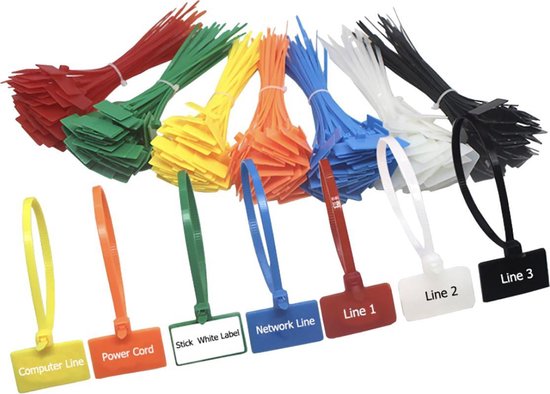Hey Peter, in my engineering work over the years, I’ve tried a great many things. I’ve concluded that there’s truly no way to avoid label glue completely, except for the wire markers that are made to spin on the cable because they have no glue for a specific section of the label. They work fine when labeling multiple conductors in a loom because the labels can’t slip below the first binding of the loom.
I am not familiar with the "wire markers" that you are referring to.
So glue is less of a real problem than we think unless we’re often re-purposing cables.
In my case, I don't think that I will be making many changes to my wiring setup once I am done. So, a few labels affixed to either the connector or wire itself won't be the end of the world.
I use a commercial labeler made by Brady that I bought for my work to label all kinds of copper and fiber cables, panels, etc. It's around $100 U.S. and the label cartridges are $25 for 5 meters of label - not cheap, but they are professional, provide upper and lower case, symbols, etc. Symbols allow me to keep label text shorter, such as by using the Greek letter phi for the phase of a power lead (e.g. “AØ”) instead of typing “Phase A”.
Also, once labeled, you won’t usually be making many changes. True!
Equally important is what labeling convention you’re going to use. For example, do you label the plug with its function (e.g. “Left channel Reverb”), the device to which that end connects (e.g. “DM Aux 1”), the far end so you know to what it connects (e.g. “Left - Lexicon PCM96”) or something else? I’ve created a hybrid form for myself that gives me the close end first followed by the far end (e.g. Left-Lexicon/DM Aux1”). So this tells me that this end of the connector goes into the left channel of the reverb and is connected to Aux 1 on the DM at the other end. It has worked well for me and I’ve created my own set of abbreviations. I also use this approach at my client’s sites by specifying it in the plans for the technicians to implement. In bigger installations, there will be multiples of the same devices, such as several or many Ethernet switches, routers, RTUs, etc., and that helps you to know what you want to do with the close end when you have a bunch of cables in your hands to connect that come from many devices at many locations on the far end. Often times, you don’t even need to have a diagram or cable tables with you using this method.
As for changing routing, it’s really a personal thing. I used to use a number of patchbays, but these days, I do most routing via the DM and use only a few bays for external connections, such as for adding mics, plugging in headphones, and connecting external equipment that isn’t permanent. Otherwise, all of my routing and re-routing is done through the DM. That also provides me with an easy method to change protocols, say from line level to ADAT, or to AES, etc.
All the foregoing notwithstanding, I’m dealing with complicated setups for the bigger clients and I don’t have this kind of complexity in my studio, and I suspect most of us don’t either. But I wanted to present enough options here so you can think about it and decide what you feel will work best in your studio and possibly even create your own labeling convention that augment the way you like to work.


